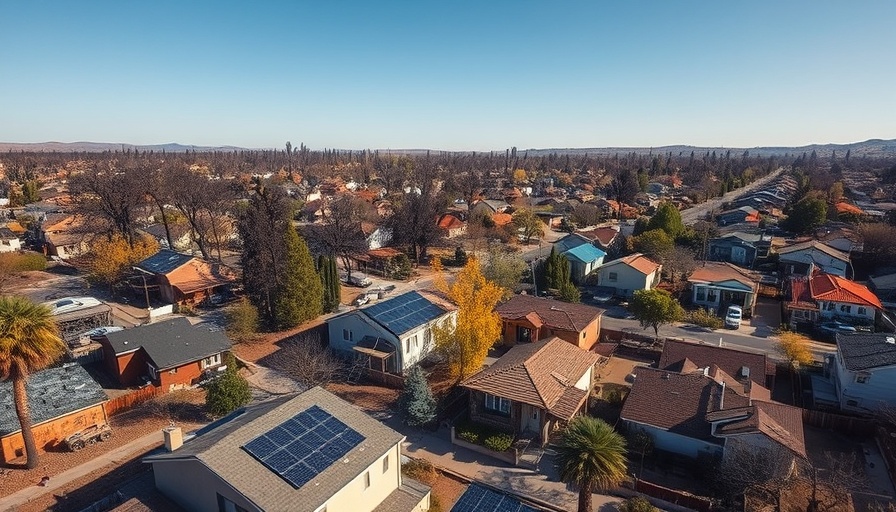
Understanding Planned Blackouts: A Necessary Measure
In California and across the West, wildfires pose a severe threat during the dry summer months. High winds can turn sparks into catastrophic flames, resulting in loss of property and tragic fatalities. In response, power companies like Pacific Gas & Electric (PG&E) and San Diego Gas & Electric (SDGE) have adopted a strategy known as Public Safety Power Shutoffs (PSPS). These planned blackouts aim to prevent fires by cutting power when conditions become dangerously dry and windy.
Historically speaking, SDGE first instituted this preventative measure after the devastating Witch Creek Fire of 2007, which caused immense destruction and forced the evacuation of over a million people. The approach gained traction after PG&E’s forced blackouts post-2017, following severe wildfires that ravaged California’s wine country. The massive PSPS event in 2019 disrupted power for millions, showcasing the critical nature of this public safety strategy.
How Planned Blackouts Are Implemented
Power companies monitor forecasts and proactively implement PSPS when high-risk conditions are detected. Residents receive advance warnings before power is shut off, which can last from a few hours to several days. The utilities must conduct thorough inspections of power lines before restoration begins, ensuring the safety of the electrical grid.
Nationwide Perspectives: It's Not Just California
Although they are most commonly associated with California, planned blackouts are becoming a nationwide phenomenon. Following the Lahaina fire in Hawaii in 2023, Hawaiian Electric also implemented a PSPS plan amid public outcry for more proactive measures. Likewise, Oregon utilities, such as Portland General Electric, have similarly used power shutoffs to prevent fire risks.
The Duration and Impact of Planned Blackouts
While a prolonged blackout like that in 2019 is rare, the duration is highly variable. Nick Barber from Prepaid Electricity emphasized that most planned outages generally last from hours to days, based on the severity of weather conditions. The restoration process involves a painstaking inspection of every section of the grid, further delaying power reinstatement in some cases. Understanding these factors helps residents prepare and respond effectively.
Preparing for a Planned Blackout
For many homeowners, particularly in fire-prone regions like California, it’s essential to implement proactive measures in anticipation of power outages. This preparedness ranges from stocking up on food, water, and medical supplies to ensuring that generators and battery-powered devices are ready to go. Residents are encouraged to keep their mobile phones charged and have flashlights available to navigate through potential nights without power.
Community Engagement: Sharing Good Practices
Addressing the complex concerns related to planned blackouts is a community effort. Neighbors can come together to share resources like generators or information about local shelters or cooling centers open during outages. Community meetings can foster understanding of risks and appropriate measures residents can take for safety and support. This engagement not only enhances preparedness but strengthens local bonds.
The Future of Power Management in an Unpredictable Climate
As climate change intensifies, power companies are likely to rely increasingly on planned blackouts to maintain safety. Perspectives on how utilities manage emergencies are expanding. Many advocate for energy-efficient solutions and renewable energy resources to alleviate reliance on traditional grids that are prone to failure during wildfires and severe weather events. It’s vital for residents to stay informed and engaged with their local utilities and community forums about these developments.
Final Thoughts: Your Role in Emergency Preparedness
The prospect of planned blackouts can be daunting; however, understanding their purpose and effects allows homeowners to navigate these challenges effectively. Adequately preparing equips families not just for outages, but for the broader context of climate-related emergencies. It’s time to prioritize safety, resources, and neighborly support to protect our communities.
To stay ahead of potential outages and ensure your family is prepared, consider creating an emergency preparedness plan today. Establishing a kit and involving your community in discussions are meaningful steps towards adapting to the future—you hold the power to make a difference.
 Add Row
Add Row  Add
Add 




Write A Comment